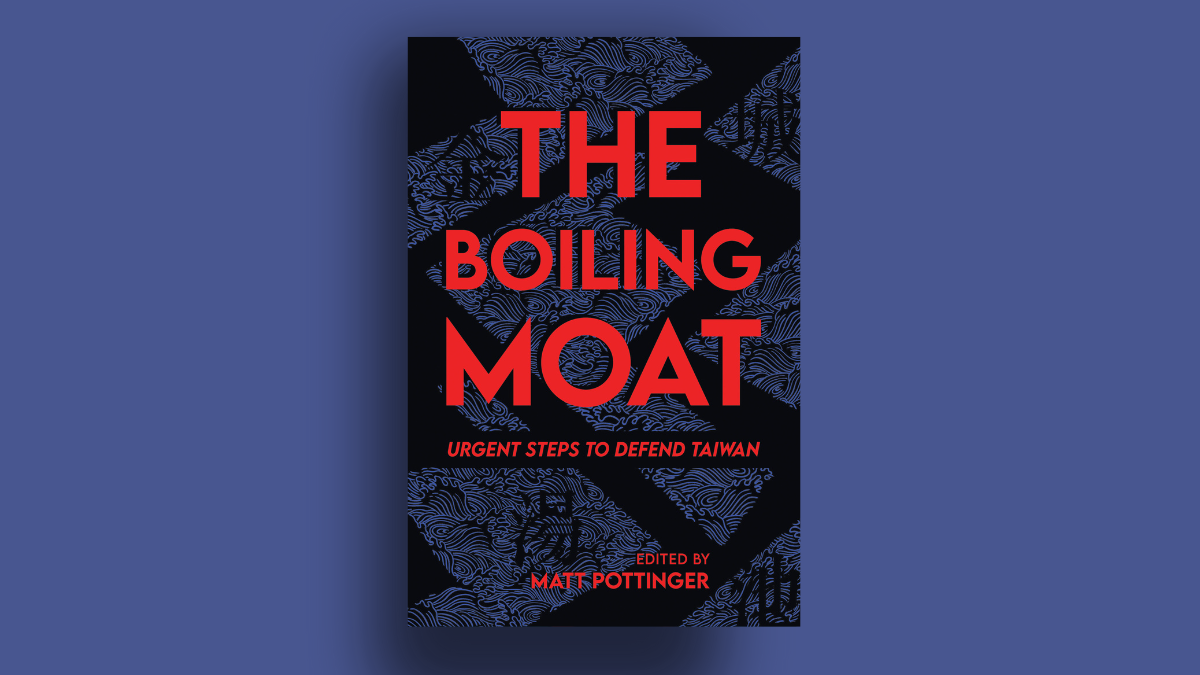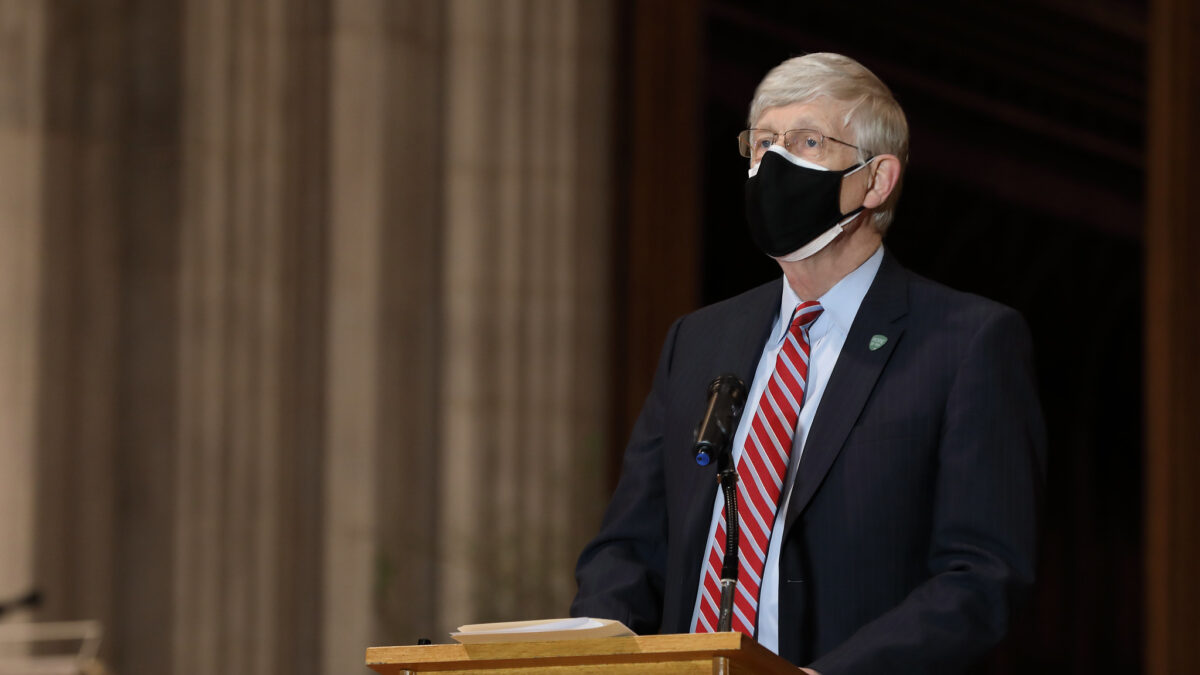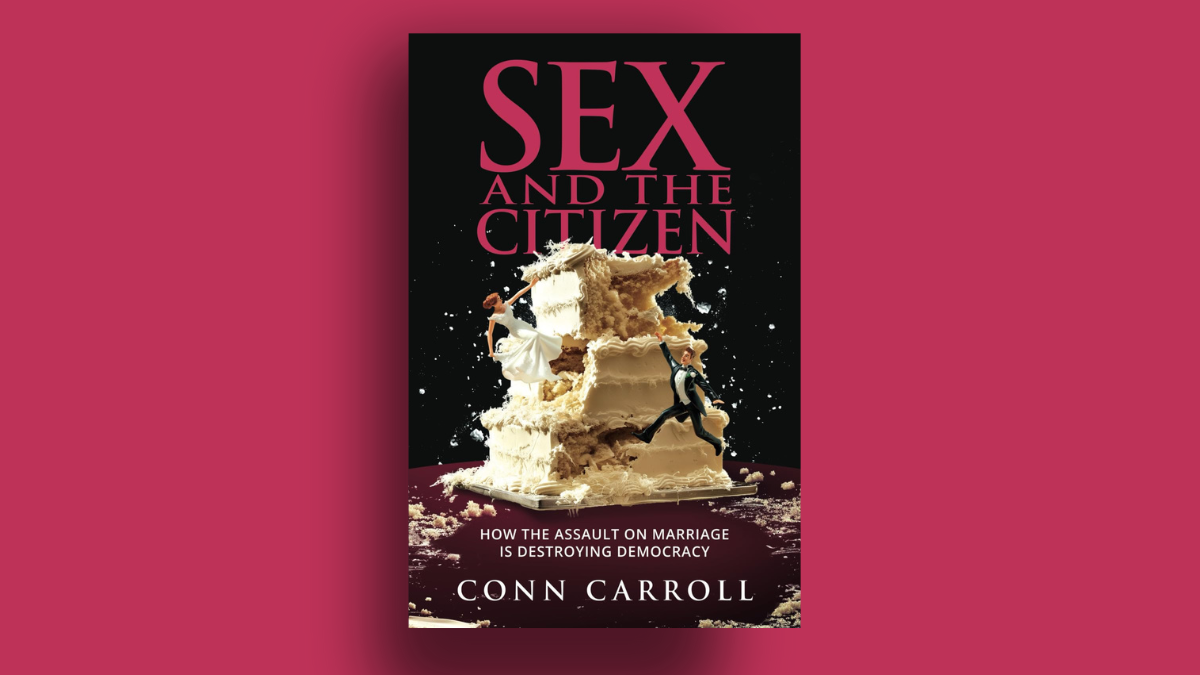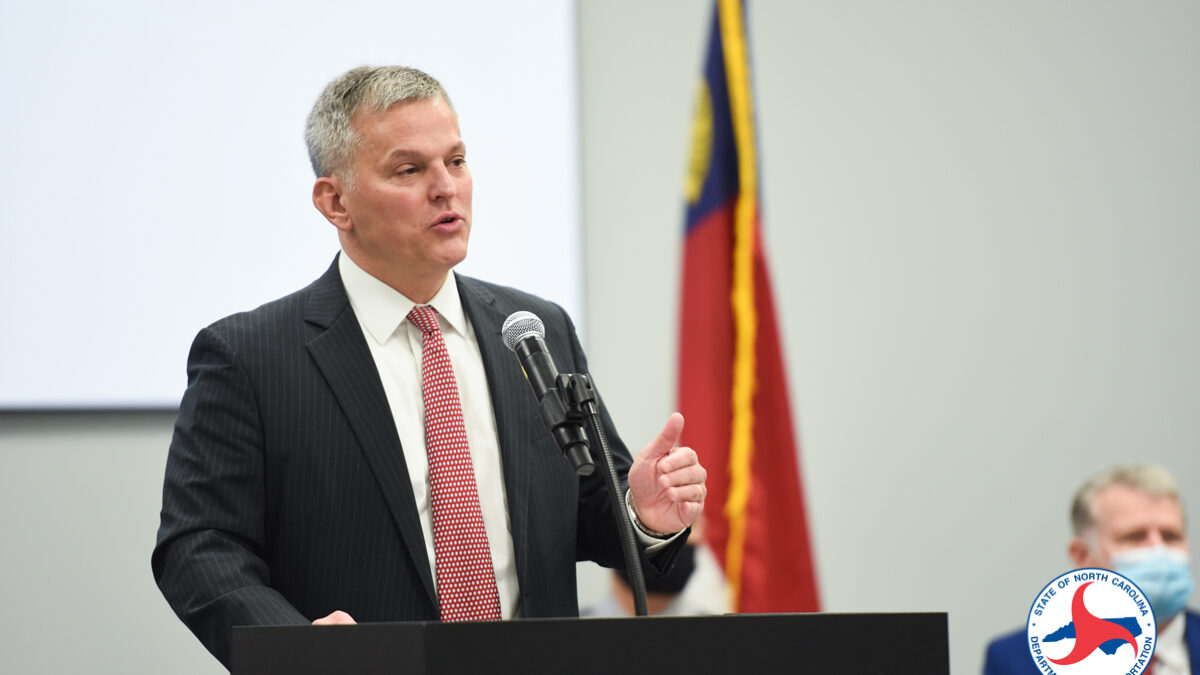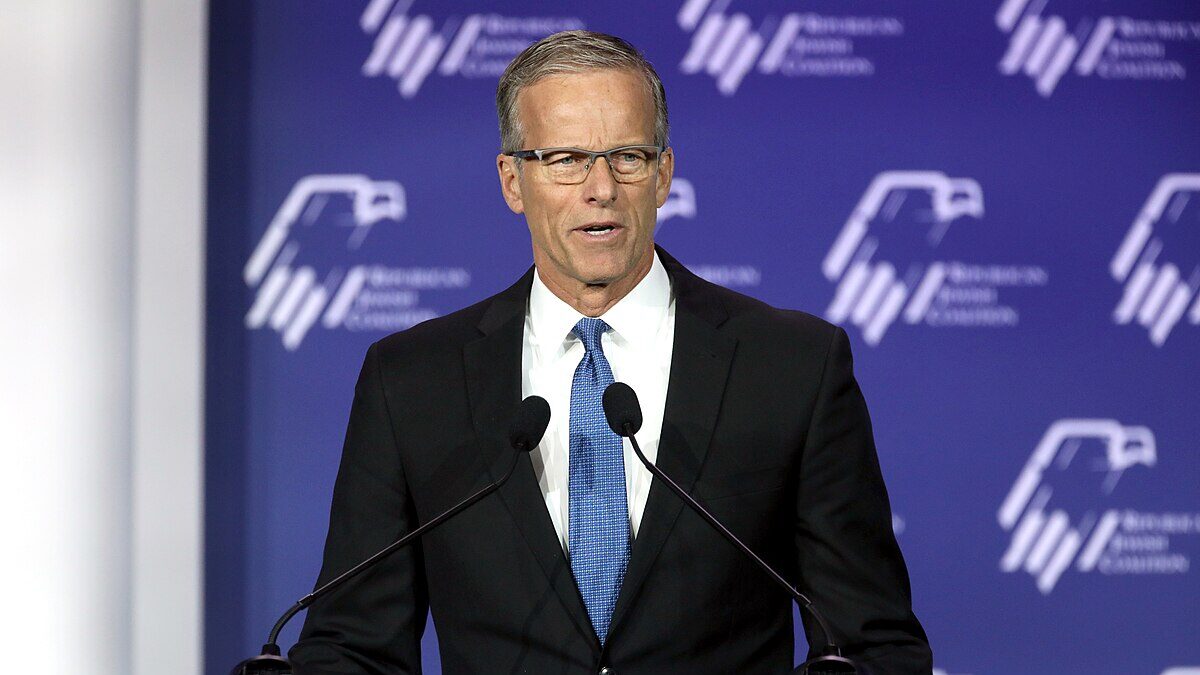
For the first time in decades, the Federal Reserve has been playing a non-negligible role in the presidential race. Candidates in both parties took turns criticizing the Fed for either not doing enough to fix the economy, or for going far past its scope and putting the economy at risk.
But moving beyond political stump speeches—and, for that matter, conventional thinking among economists—the question should still be asked: Does the Federal Reserve even matter? Here author John Tamny explains the thinking behind the title of his provocative new book, “Who Needs the Fed?” (Encounter Books, May 24).
Jared Meyer: I want to start with your conclusion. You write, “End the Fed? With great haste,” (emphasis in original), but then you go on to explain why ending the Fed will not “get us out of the woods.” Why did you build up Ron Paul’s “End the Fed” supporters, only to tear down their hopes that the Fed is the source of all our economic ills?
John Tamny: I had to build up Ron Paul’s supporters only to douse their hopes a bit simply because I think all the focus on the Fed misses much greater governmental threats to growth.
About the Fed, end it with great haste simply because it serves no useful purpose on its best day. Think about it. It was formed over 100 years ago as a “lender of last resort” for solvent banks, but the act of solvent banks approaching the Fed for loans is unheard of. It is because banks with good balance sheets don’t need the Fed. Only the insolvent approach the Fed for funds, and those institutions should be allowed to go under so that they can be acquired by better owners.
Bank regulator? As 2008 reminds us, not to mention that the Fed has bailed out Citibank five times in 25 years, the Fed isn’t so hot as a bank regulator. What about its attempts to set interest rates? We quite simply don’t need it for that. An interest rate is a price that factors in the infinite needs of savers in concert with the similarly infinite needs of potential borrowers. Interest rates can’t be planned. Central bankers couldn’t possibly possess even a fraction of the information necessary to credibly set them.
But we aren’t out of the woods if we simply end the Fed. This is because much of what the Fed’s critics despise it for is not its fault. The Fed is said to have devalued the dollar 93 percent since 1913. The obvious problem there is that the Fed is not charged with setting the dollar’s exchange rate value.
Indeed, the first devaluation of the dollar after the Fed came into existence was in 1933. President Roosevelt ordered it. The Fed had nothing to do with it. Fed Chair Eugene Meyer even resigned over FDR’s decision.
The next major devaluation took place in 1971. This time President Richard Nixon was prodded by Treasury Secretary John Connally (Treasury is charged with overseeing the dollar’s exchange rate), and both were advised by Milton Friedman to float the dollar. Fed Chairman Arthur Burns begged Nixon to reconsider, but got nowhere. Presidents have historically gotten the dollar they’ve wanted. The Fed has had nothing to do with the horrid—and economy-sapping—devaluations of the dollar that have the central bank’s critics so riled up.
Why Dropping Billions on Baltimore Won’t Help Anyone
JM: You use a lot of relatable stories to convey your arguments (everything from Jim Harbaugh and Taylor Swift to Uber and Amazon). At one point you explain how credit flows to production by contrasting Baltimore and Silicon Valley. Why do you argue that dropping $1 billion from a helicopter on Baltimore would do nothing to fix the ailing city’s problems?
JT: Dropping billions from helicopters won’t fix Baltimore simply because money goes where it’s treated well. Nothing the Fed does can change that. Many people argue that weak economies can be fixed by central banks that actively increase so-called “money supply.”
If the Fed drops billions from helicopters into Baltimore, let’s first suppose that the citizens who pick up the money race to banks in the city to deposit it. If so, the money would vanish from Baltimore as quickly as it arrived. Banks aren’t in business to make loans where there’s very little economic activity, so if suddenly showered with billions of new money, Baltimore banks would quickly lend it to productive ideas well outside of the city, and arguably the state.
Assuming those who pick up the billions want to spend the money, Baltimore isn’t the ideal locale for most to spend a windfall. In short, money dropped into the Charm City would be spent well outside of it. But what if every one of the billions of dollars is spent at businesses right in the city? Okay, if so, no business will expand based on a one-time helicopter drop, or even several of them. In that case local business owners would put the windfall in the bank only for it to be lent well outside the city.
Just the same, the Fed couldn’t shrink “money supply” in Silicon Valley on its best day. That’s the case because those with money are desperately trying to find ways to put investment behind all the innovators there. Any Fed attempt to drain the area’s banks and venture capital funds would prove worthless. Investors around the world are lining up to place capital there because production is a magnet for money. It is also a magnet for credit, defined as economic resources attained by the productive through borrowed money.
As Baltimore and Silicon Valley remind us, no central bank can stimulate or neuter economic activity. Money and credit finds and will find productive uses no matter what the Fed does. The Fed is distortive sideshow, but happily one that shrinks in relevance by the day.
Where Austrian Economists Are Dead Wrong
JM: One of my favorite parts of your book was when you absolutely—in the words of Salon.com—eviscerate the Austrian argument against fractional reserve banking. You have a lot of praise for Austrian economists throughout the book, so can you please explain why they are so flat-out wrong on this point?
JT: Some Austrians dislike banks because they claim they multiply money. They view the vanilla banking activity whereby banks take on liabilities (deposits) only to turn them into assets (loans) as fraudulent. If the Austrians are to be believed, the act of banking multiplies money and credit.
But credit can never be multiplied. Paraphrasing the founding father of the Austrian School Ludwig von Mises himself, when we borrow money we’re not borrowing dollars, rather we’re borrowing the trucks, tractors, desks, chairs, computers, and labor that money can be exchanged for. Credit is not money. It’s real resources. Real resources cannot be multiplied.
Back to banks. If Austrian theorizing is to be believed, banks make money worthless by virtue of lending it and multiplying it. To test this assertion, readers should conduct an experiment. Get together with four or five friends. Sit at a table. Reader A becomes a bank with $100 on deposit, and a 10 percent reserve requirement. He then lends $90 to his neighbor at the table, Bank B. Bank B then lends $81 to Bank C, only for Bank C to lend $72.90 to Bank D. Those who do this will soon find that once the experiment is over with, there’s still only $100 at the table. There’s no multiplication of $100 into $343.90, and there’s certainly no multiplication of credit.
It’s important to point out that if banks were able to multiply dollars by virtue of lending them (seemingly on the way to infinity), then the money we all work for would have no value. Along these lines it’s certainly true that the rich would not work for dollars. Why produce for something apparently being rendered worthless by multiplication. Of course, there is no multiplication to speak of.
After that, if banks can multiply money by lending it, why don’t we all start up small, unchartered banks on the side? If so, the path to quick—and, with a zero reserve requirement, infinite—riches would be rather simple. A great school of economic thought has besmirched its wondrous reputation thanks to the focus of some members on a non-act that is logically impossible.
Milton Friedman Is Wrong, Too
JM: I want to continue on the theme of evisceration. The great Milton Friedman had perhaps the greatest role of anyone in shaping conventional wisdom on monetary policy. The school of thought that his insights shaped is known as monetarism. I know you are a big fan of Friedman, so why are you not a monetarist?
JT: Milton Friedman was wonderful, but he had an odd fixation on “money supply.” About it, he admitted late in his life in a 2003 interview with the Financial Times that monetarism had failed. And it did for obvious reasons.
Monetarists expect the central bank to plan an annual increase of money in a country. But they can do no such thing, as Baltimore and Silicon Valley reveal. Central banks couldn’t do this in countries either. Think Greece. Monetarists blamed Greece’s troubles on a tight European Central Bank. Had the ECB more consistently increased the supply or Euros in the country, everything would have been okay. What a laugh! Any increase of euros in Greek banks would have vanished quickly; the funds being lent well outside Greece in places where economic activity is much more evident.
Where the enterprising travel, money follows, along with investment. If Amazon CEO Jeff Bezos moved to Haiti tomorrow without a cent, billions would be there for him within hours. It cannot be overemphasized that money supply is an effect of production.
Friedman felt that central banks should plan increases and decreases in money supply. But they couldn’t do so, nor can they. For one to plan money supply is for one to presume to plan production. What a horrid conceit! Hard as it is to imagine about Friedman, his ideas on money amounted to central planning.
I’m not a monetarist simply because it not only hasn’t worked, but it also logically cannot work. Central planning never does. Money is what the productive seek in return for their toil. None of this can be monitored or planned by a computer or a skilled central banker. Friedman was right to finally admit that his monetary theories made very little sense. If only his modern-day followers would take his advice.
Tax Cuts? Good, Yet Dangerous
JM: You also have some choice words for supply siders, a school of which you consider yourself a part of. Where do modern supply siders go wrong, and how do their errors tie in with misguided thinking about monetary policy?
JT: Yes, I’m a serious supply sider. To me it’s a tautology. Government should remove the tax, regulatory, trade (tariffs), and monetary (floating, uncertain money) barriers to production. If so, prosperity is the inevitable reward.
Where I struggle with supply siders is in the area of tax cuts. Up front, I’m wildly for them. Let’s reduce the price placed on work and investment as much as Congress will allow. I also think supply siders are correct that the frequent result of tax cuts is increased productivity that actually leads to higher federal revenues. Major tax cuts in the 1920s, ‘60s, and ‘80s revealed just that.
Where I think the supply siders erred and continue to err is in not focusing on the horrors of government spending. Too often they’ve been willing to trade tax cuts with the Left in return for government revenues.
What they’ve missed is that politicians exist to spend. Spending is a massive tax on production because it signals government’s extraction of precious resources from the real economy. Worse, once started, government programs rarely die. In the book I write about Medicare. It began as a $3 billion program in 1965, and was predicted by the House Ways and Means Committee to cost $12 billion annually by 1990. In reality, it was a $110 billion program by 1990, and it is projected to cost $1 trillion by 2020.
Notable here is that after the wondrous John F. Kennedy tax cuts (signed into law by Lyndon Johnson) led to economic growth and a surge of revenues, politicians had the means to start a Medicare program that is the main driver of our long-term spending addiction.
This is what supply siders miss. Governments don’t take in revenues only to give us back the excess or pay down debt, they find new ways to spend it. In short, rising revenues for government represent a massive tax on growth simply because they fund an even bigger government with programs that are near-impossible to sunset.
Supply siders have designed genius tax cuts, but precisely because they gift politicians with revenues that turn into a multiplicative tax, supply siders would do best to similarly focus their genius on ways to contain and reduce spending despite the higher revenues. Only then will the economy enjoy the full benefit of essential reductions in taxes.
JM: There is much more to your book, including an examination of the causes and responses to the 2008 financial crisis, a revealing autopsy of traditional banking, and an uplifting exaltation of robots. Federal Reserve Chair Janet Yellen—and for that matter, all academic economists—should read “Who Needs the Fed?” as a reality check on their central-planning dreams.


